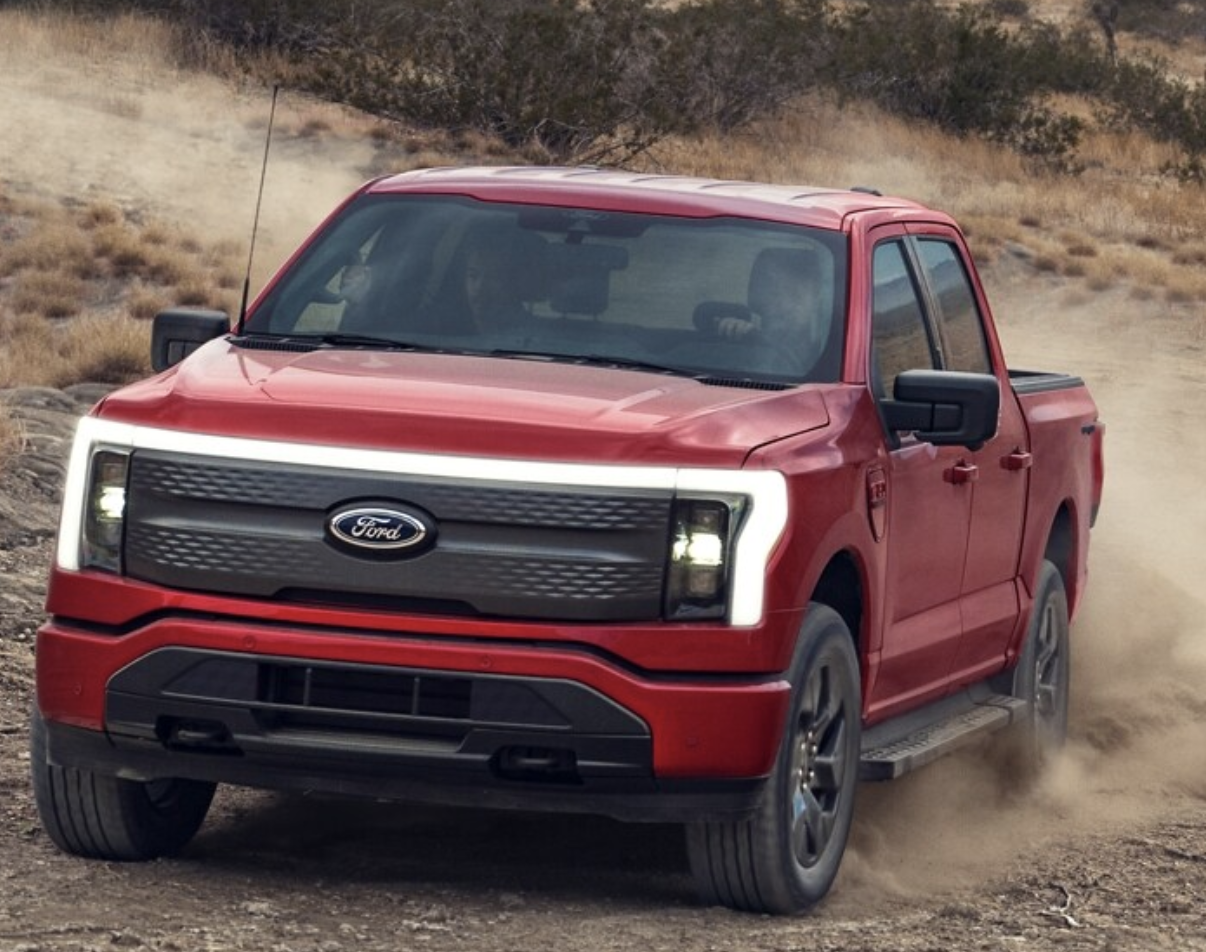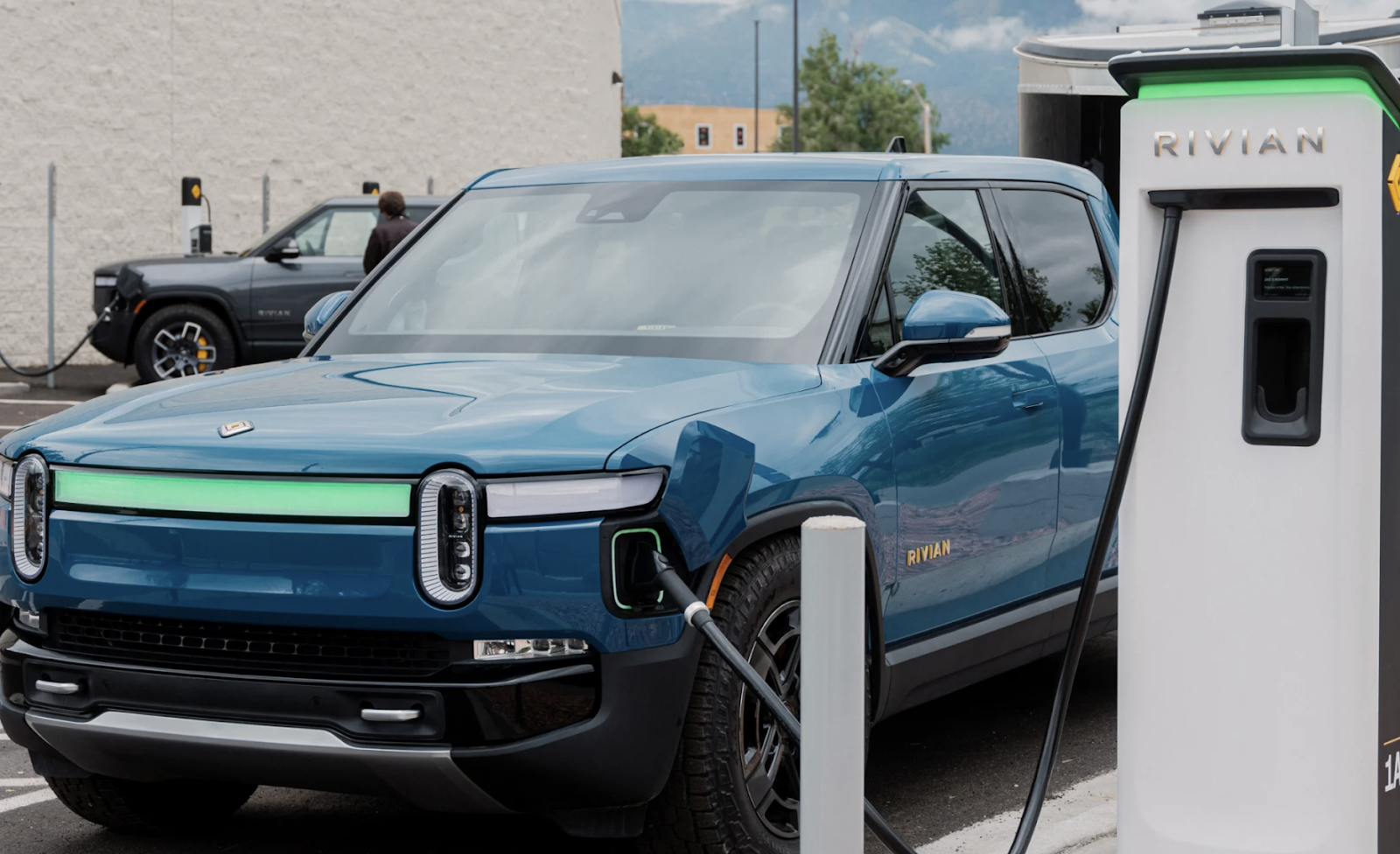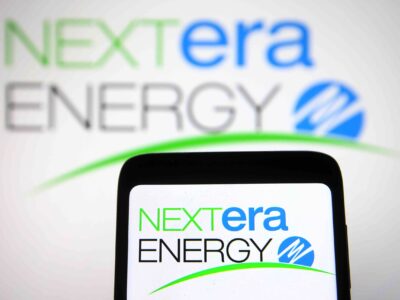Electric pickup trucks are crucial to getting Americans to adopt electric vehicles (EVs). The top-selling vehicle in the U.S. has been a pickup each year since 2010, with Ford, Chevy, and Ram rounding out the top three. As electric trucks replace their internal combustion engine counterparts, knowing what you’re getting in each vehicle is ideal.
Niche manufacturers are also joining the electric truck industry as they look to topple some traditional brands. Today, we are comparing the Ford F-150 Lightning and Rivian R1T.

Photo Courtesy Ford
Ford F-150 Lightning
When the F-150 Lightning debuted in April 2022, it shocked the automobile industry. Not only did Ford develop one of the more intuitive electric trucks available, but the company made it the ultimate utility vehicle. Two years later, the 2024 Lightning model hasn’t changed too much.
According to Kelley Blue Book, more versions of the Lightning are entering the market as Ford capitalizes on its success. The Lightning is the top-selling electric pickup truck in the U.S. Buyers have options now: Pro, XLT, Lariat, Flash, XLT Extended Range, Lariat Extended Range, Platinum Extended Range, and Platinum Black. Each of these versions costs between $49,995 and $91,995, according to Ford.com. They come with different ranges, aesthetics, and driving functions.
All F-150 Lightnings have the same horsepower — 452 — but Extended Range gets it up to 580. Road tests clocked the truck’s 60 mph acceleration in 4.0 seconds, speedy for a pickup. Every model is all-wheel drive. The handling is top of the line, with a low center of gravity keeping the body roll in check.
Towing is essential for all pickup buyers, and Ford knows it. The Lightning can tow around 10,000 pounds of payload, exclusive to the Extended Range editions. A standard lighting can carry closer to 7,700 pounds. Towing puts strain on the batteries, causing energy to be lost quickly.
Most Lightning models get around 230 miles back per charge. Long-range batteries, like those found in the XLT versions, can get closer to 320 miles. The battery can go from 15% to 80% in 33 minutes.
The niftiest feature of the Lightning is its bidirectional capabilities. The truck can serve as a generator for three days in case of power outages.
Don’t take our word for it. Read about how it was utilized to charge electric planes and power movie set lighting.
These are just some notable stories of the Lightning’s bidirectional charging. There are more out there yet to be covered. Vehicle-to-load, vehicle-to-grid, and vehicle-to-home capabilities give the Lightning the ultimate utilitarian rating.
Inside, the cabin contains a 12-inch infotainment system with Ford Sync 4 software. Apple CarPlay, Android Auto, GPS, and in-vehicle wifi all standard. A Bang & Olufsen stereo system provides exceptional sound. There is a front trunk in the absence of the engine block and plenty of space in the bed.
Safety features include automated emergency braking, lane-departure warning, lane-keep assist, and adaptive cruise control. The Insurance Institute for Highway Safety (IIHS) gives the Lightning green ratings for crashworthiness and avoidance. The under-$50,000 models will qualify for EV tax credits. Green Car Reports lists it as the Best Green Car To Buy for 2023.

Photo Courtesy Rivian
Rivian R1T
Ranked just above the Lightning by Car and Driver, the Rivian R1T combines utilitarian design, speedy handling, and efficient range. It’s one of Ford’s biggest rivals in the electric truck sphere. The 2024 model has a few new bells and whistles but stayed true to its roots.
A dual-motor setup gives the R1T a 700-hp kick. If you upgrade to the quad-motor setup, horsepower can reach 835. The 835-hp version can reach 60 mph in 3.3 seconds, incredibly fast for an electric pickup truck. The dual-motor model can reach 60 mph in 3.4 seconds, and there is no speed sacrifice across the R1T’s two versions. Rivian allows for custom builds on their website.
The Adventure, the standard version, costs around $75,000. The All-Terrain model will cost around $79,000 and has Rivian’s Large battery pack to increase the range.
It has impressive off-road functionality, too, with eight to 14 inches of suspension at the wheels. It can tow up to 11,000 pounds, but it can deplete the battery faster.
Buyers can choose between the Standard, Large, and Max batteries, depending on range needs. Max would be the best option if you plan to tow a lot with the R1T, but it will add at least $16,000 to the MSRP.
The range is quite good across all the battery pack options. Standard gets 270 miles, Large gets around 352, and Max gets around 410 miles. The company’s home charger can give back 25 miles of range per hour until fully charged. You can also use Rivian’s network or any standard CCS plug at public chargers.
The interior is sophisticated. A 16-inch infotainment system comes standard with GPS, climate, and media control and receives over-the-air updates. Rivian doesn’t have Apple CarPlay or Android Auto but does have Amazon Alexa. In-car wifi is another nifty feature. Drive modes can be enabled for certain terrains like sand or snow.
Safety features include automated emergency braking, lane-departure warning, cruise control, and rear-view camera. There is even hands-free driver assistance called Driver+. The IIHS gives the R1T a green rating for crashworthiness and crash mitigation.
Closing Thoughts
Of the two, the Rivian R1T stands out the most because it has a longer range. It can tow more weight than the Lightning, has better off-road handling, and a better battery pack.
The Lightning has more editions; therefore, more choices for buyers. Yet they all increase in price the higher in quality you go. However, you get better range and towing with the Platinum and Lariat models. They will cost more than the R1T, but it could be worth it, depending on your hauling needs.
Ford offers a cheaper version of the Lightning, which guarantees the minimum features. However, more consumers will likely go for the $70,000 model because it has optimal range, all the interior features, and bidirectional charging capabilities. We couldn’t find anything official about Rivian offering bidirectional charging other than they may get it in the near future.
Both trucks are made in the U.S. and qualify for Inflation Reduction Act tax breaks, though not the entire $7,500, because the R1T starts at $75,000, above the threshold.
The $49,000 Lightning will be because it is below it. Likely, both will only get the critical mineral or domestic parts tax break ($3,750). Still, a discount is a discount.
It’s hard to find a clear-cut winner for best interior. Ford has a more intuitive infotainment center and earns points just by having Apple CarPlay. Rivian has a bigger screen and Amazon Alexa. Both have Bluetooth and GPS capabilities. Ford has a better sound system, though. Both offer plenty of storage space, legroom, and in-vehicle wifi.
The Lightning might edge out the Rivian simply because it has more technology integrated into it, and the bidirectional charging features are a huge hit. However, Rivian might be the more reliable with its range. You couldn’t go wrong with either of these trucks.





